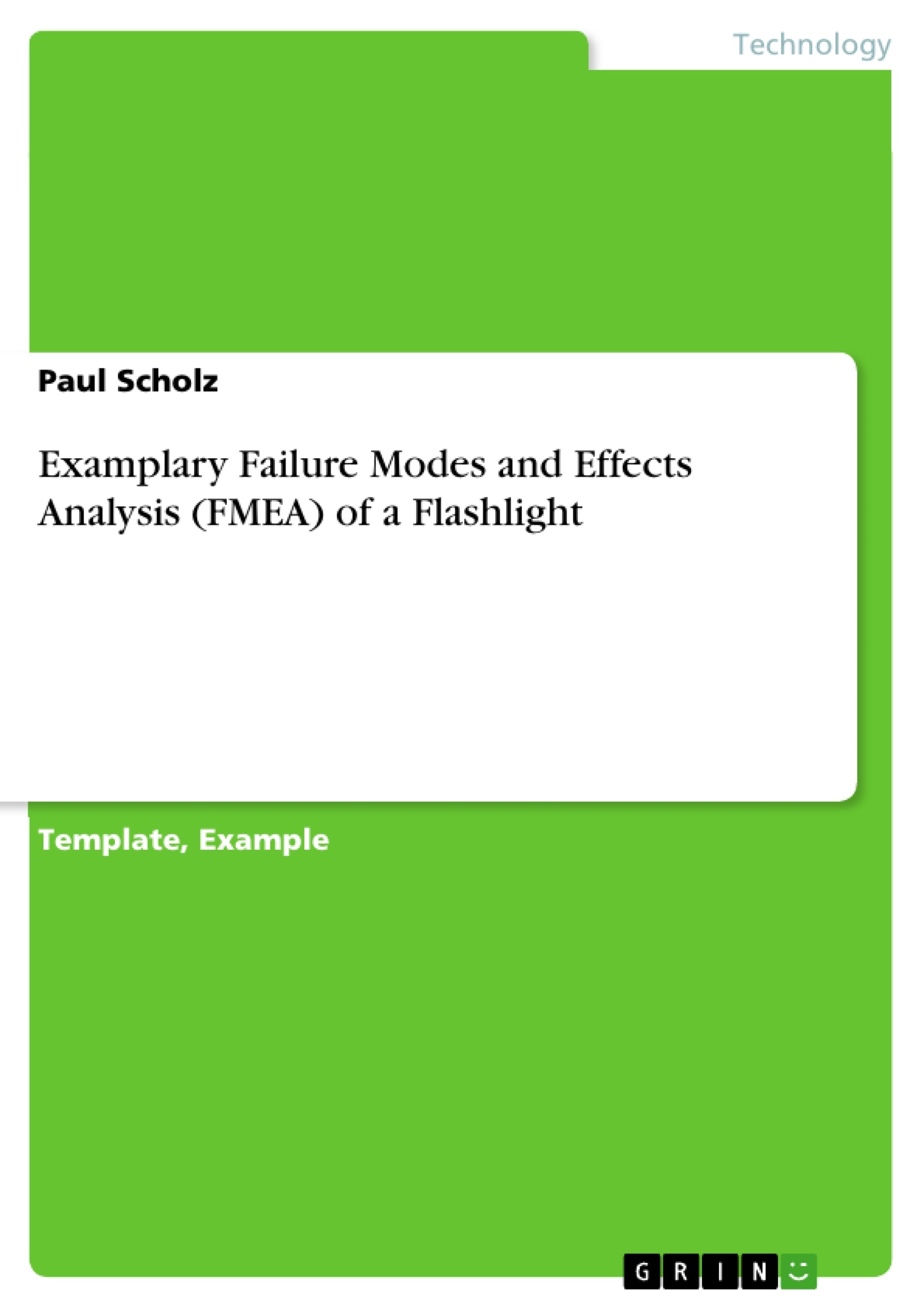This paper provides an exemplary Failure Modes and Effects Analysis for a flashlight.
Contents include:
- Introduction of FMEA, History, General Facts and Benefits
- Types of FMEA
- Method Description
- Preparing the object for FMEA
- Product Structure, Structural Tree, Functions, Functional Tree, Possible Failures, Malfunction Tree, Failure Trees,
- FMEA Form example
- Pareto Analysis.
Table of Contents
- Introduction of FMEA
- History
- General Facts and Benefits
- Types
- Method Description
- Preparing the Content for FMEA
- Product Structure
- Functions
- Possible Failures
- FMEA Form
- Pareto Analysis
Objectives and Key Themes
The text aims to provide a comprehensive understanding of Failure Mode and Effects Analysis (FMEA), a method used to identify potential failures in products and processes during the development phase. It outlines the history of FMEA, its general facts and benefits, and its various types. The text also delves into the preparation of content for FMEA analysis, including structuring the product's components and identifying possible failures.
- History and development of FMEA
- Benefits and applications of FMEA in product and process development
- Types of FMEA including Design FMEA, Process FMEA, and System FMEA
- Methodology and steps involved in conducting FMEA
- Preparation of content for FMEA analysis, including product structure and failure identification
Chapter Summaries
The introduction delves into the history of FMEA, highlighting its origins in NASA projects and its subsequent standardization and adaptation for various industries. It also outlines the general facts and benefits of FMEA, emphasizing its role in identifying potential failures early in the development process. The text then explores various types of FMEA and provides a detailed description of the method, outlining the steps involved in conducting an FMEA analysis. The chapter on preparing the content for FMEA focuses on organizing the product's components into a structured graphic to facilitate the analysis. This chapter also introduces the concept of sublevels and provides examples of how to break down a product into its individual components.
Keywords
Failure Mode and Effects Analysis (FMEA), risk assessment, product development, process development, potential failures, quality control, risk priority number (RPN), structured analysis, product structure, functional tree, malfunction tree, failure tree, Pareto analysis.
- Citar trabajo
- Paul Scholz (Autor), 2016, Examplary Failure Modes and Effects Analysis (FMEA) of a Flashlight, Múnich, GRIN Verlag, https://www.grin.com/document/318703




